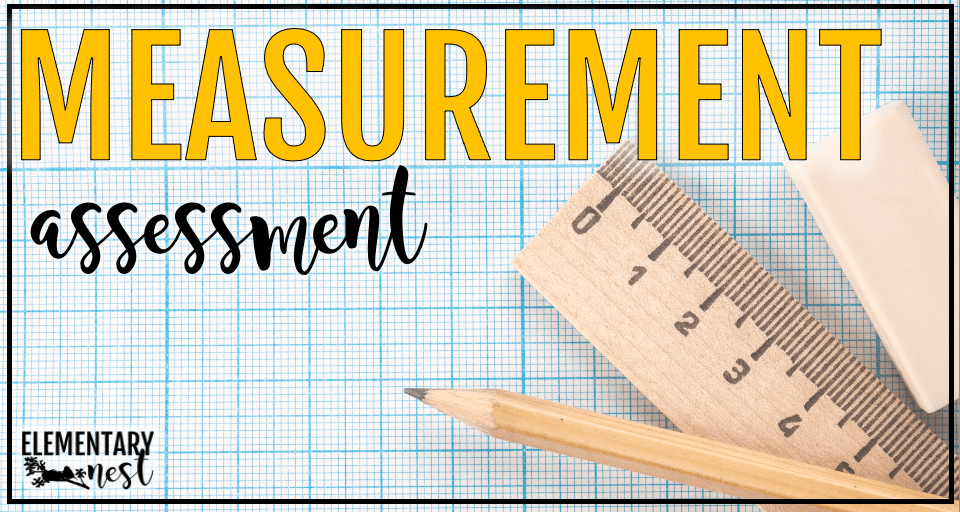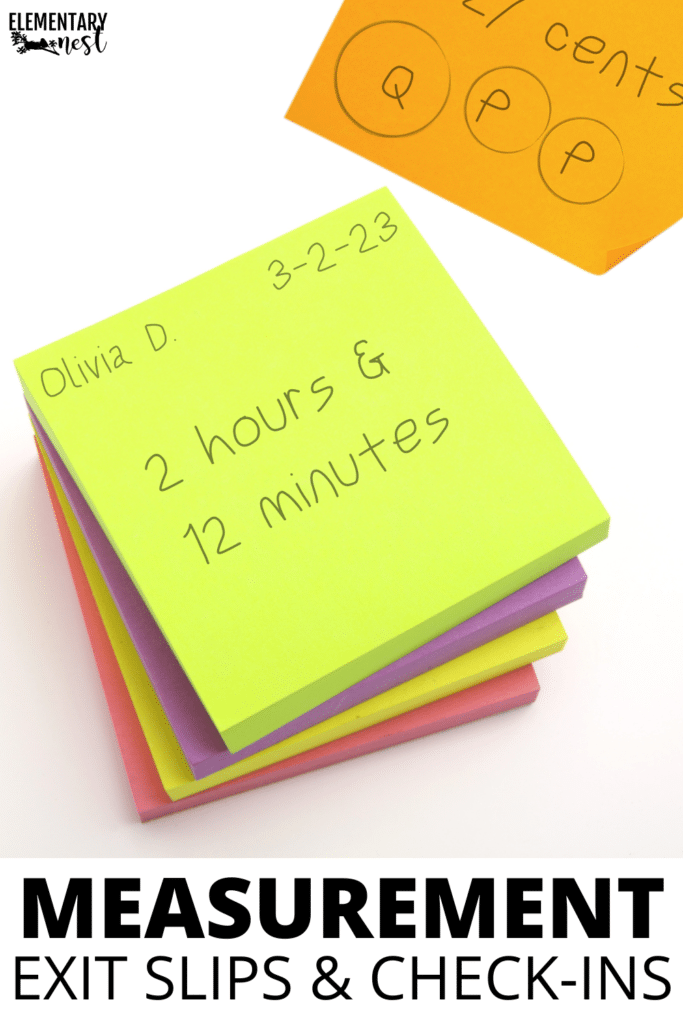
I’m so happy you’re still with us! This is the fourth part of a 5-day blog series all about teaching Measurement and Data! From hands-on activities and manipulatives to technology-based approaches, there are lots of great ways to teach measurement and data so that your students acquire essential skills while having fun at the same time.
Want to join in and catch all 5 Measurement and Data blog posts in this series?

FREE MEASUREMENT & DATA BLOG SERIES
Get A free 5-part Measurement & Data blog series with anchor charts, mentor texts, digital tools, organizational tips, and more!
In this fourth post of the series, we’ll explore assessment and differentiation that will support you as you teach measurement and data in your elementary classroom.
Because the Measurement and Data standards cover so many skills, I have been breaking each blog post into skill sections. For today’s post, I am going to describe assessment and differentiation in steps and tasks that can be applied to each of the measurement skill domains.
Assessing Measurement
There are several ways to assess your students when it comes to measurement. Of course, there are your standard pre- and post-unit assessments. But I want to talk more about ongoing skill assessment and how you can use that to differentiate your instruction and get all your kiddos to mastery!
Ongoing skill assessments can be very simple. The main thing you need to focus on is that the assessment is measuring specific skill competency. This just means that when we are testing if our students understand a skill, we don’t want to include other skills within that assessment. For example, don’t include capacity questions on a time assessment.



Resources shown in photos above: 1st Grade MD Worksheets (Left) | 2nd Grade MD Word Problems (Right)
My three favorite ways to assess measurement skills are:
- Specific-Skill Printable Worksheets and Assessments
- Exit Slips and Daily Check-Ins
- Digital Measurement Assessments
Skill-specific Printable Worksheets and Assessments: These can typically be found within your school or district’s math program. However, we all know that these aren’t always to *best* or *most fitting* assessments for our students. So, don’t be afraid to look outside your program. *Tip from another educator- “Don’t forget that we have standards for a reason! Simply search the standard code (for example, 2.MD.3) in your favorite search engines or resource websites. You will find what you need!”
Exit Slips and Daily Check-Ins: I love exit slips because they are so quick and easy! Keep sticky notes or note cards in your table supply bins. At the end of your lesson, write (or display) one *standard* measurement problem for your students to solve. Have them record their answers and turn them in. As you quickly look through to check which students showed understanding, you can easily plan differentiation for the next day’s activities by sorting the sticky notes into groups.
Digital Measurement Assessments- Sometimes, we want to check for student understanding without the extra paperwork. So, digital assessment tools are great for this! You can create a quick Google Slides or GoogleDrawing and share it with your students on their online class platform. As with the sticky notes, they can answer the problem and “turn it in” for you to check. I have a list of my favorite digital tools that you can read more about here.
Some extra tips for skill-specific assessment:
- Save *EVERYTHING* in easily accessible locations.
- If you’re a paper filer- create folders for each specific measurement skill.
- If you’re a digital filer- create digital folders for each specific measurement skill.
- I like to label by standard (2.MD.1, 2.MD.2, etc), but you can also label with skill names like “Comparing Measurements,” “Time to the Quarter-Hour,” “Line Plots,” “Metric Measurement,” etc.
Differentiate for Measurement Skills
Once you assess each skill, you can create your differentiation activities. In order to keep it simple when planning for differentiation, think in “stop light terms.” When checking the skill assessment, is the student:
- Green- Understanding the skill on their own.
- Yellow- Understanding the skill with help.
- Red- Not understanding the skill, yet.
Once you’ve considered their stop-light understanding, you can plan for each group’s differentiation needs. Do they need: 1. more instruction, 2. more time or more practice, 3. a challenge?
After you have your skill groups, you can plan for differentiated skill practice. Many teachers use a “Groups” or “Rotations” method for their differentiated math activities and this works great!



Start with planning hands-on activities. First, because they’re important. Second, they typically take the most prep and planning time.
Personally, I prefer to include hands-on activities for measurement skills within supported math rotations. This will allow additional skill support and the opportunity for the correction of misconceptions. You can more easily adjust the “differentiation need” when you’re a part of the activity.
Here are three rotations/stations you can include differentiated hands-on practice for measurement:
- Small-Group
- Hands-On Partner Tasks
- One-on-One Practice


Resources shown in photos above: 1st Grade MD Worksheets (Left) | 2nd Grade MD Interactive Notebook (Right)
Next, you can include differentiated printable activities! Printable activities are great for skill-specific practice because you can vary the level of complexity and the number of problems or tasks. Additionally, printable pages can easily be organized for different groups. My favorite printable measurement activities are:
- Printable Worksheets or Task Pages
- Interactive Notebook Elements
I like both of these formats because they provide opportunities for students to apply the skill at their own level. Some students are going to be ready for skill challenges while others may need reinforcement and practice. You can easily differentiate skill pages by adjusting the:
- number of problems
- the level of difficulty
- the level of support
Digital Differentiation


Resources shown in photos above: Mr. Nussbaum Jelly Bean Tree (Left) | IXL Measurement Activities (Right)
Similarly, digital activities are going to be awesome for your skill groups and differentiation! Students will be able to practice on their level
- Skill-Specific Online Games
- Digital Worksheets & Interactive Pages
- Online Math Programs that Adjust for Student Performance & Understanding
Tomorrow, I will be going into more detail about digital tools that are great for measurement! We will get into specifics for each of the domains and skills, too. So, stay tuned!
A Simple Recap:
- Use simple, skill-specific ongoing assessments to track your students’ understanding of each measurement skill.
- Group or sort students into levels of understanding or skill needs.
- Create a variety of opportunities to apply differentiated skill practice for each skill-level group.
- Small-Group/Partner/One-on-One
- Include Hands-On Measurement Practice
- Printable Skill Practice
- Differentiate by adjusting the number of problems, the level of difficulty, or the level of support.
- Digital Skill Practice
- Use skill-specific games, interactive activities, and programs that provide differentiated practice for students.
- Small-Group/Partner/One-on-One
Want to join in and catch all 5 Measurement and Data blog posts in this series?

FREE MEASUREMENT & DATA BLOG SERIES
Get A free 5-part Measurement & Data blog series with anchor charts, mentor texts, digital tools, organizational tips, and more!
Thanks again for your interest in this blog series!















